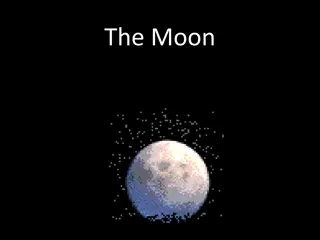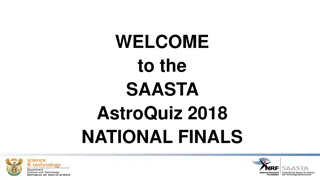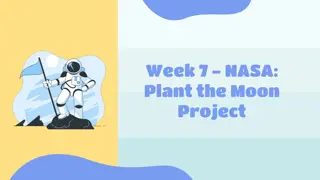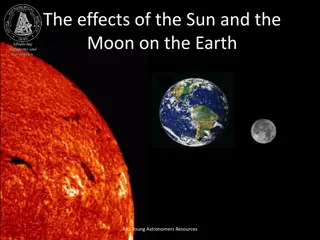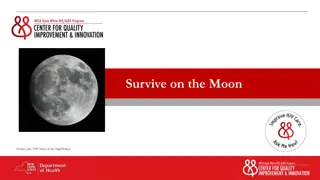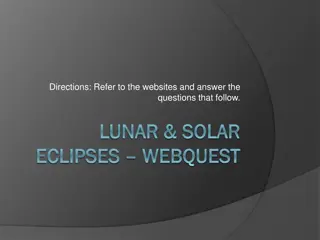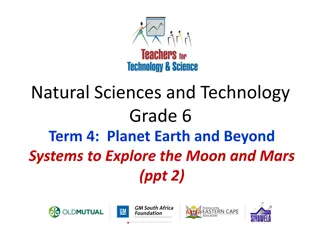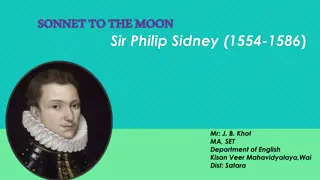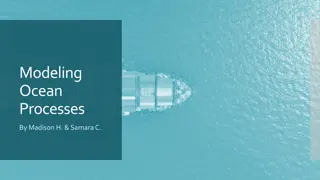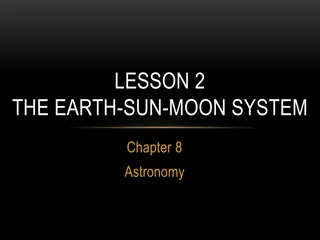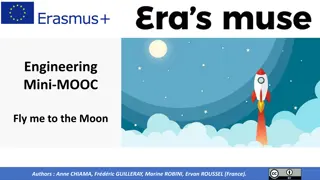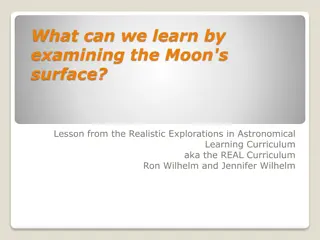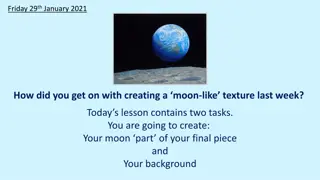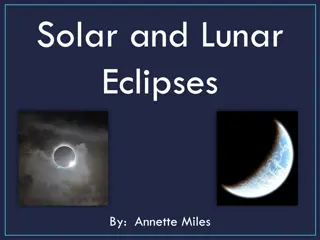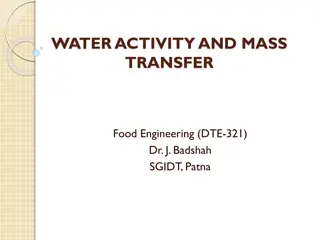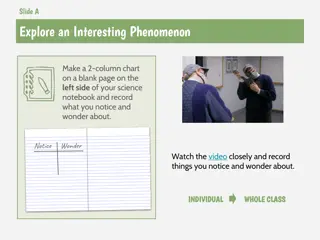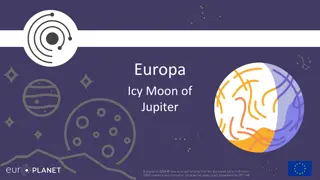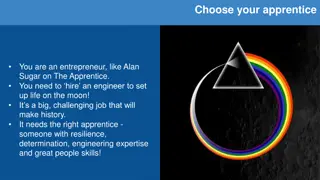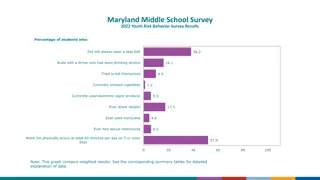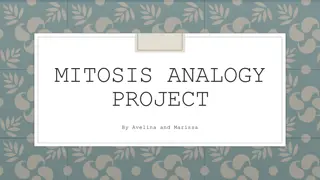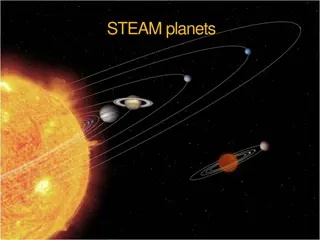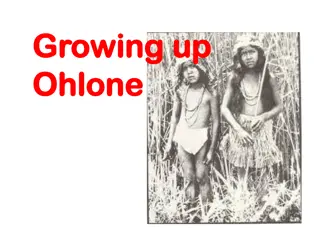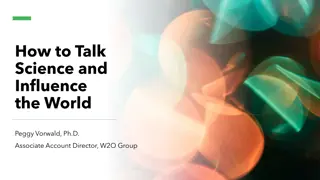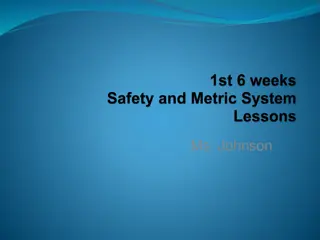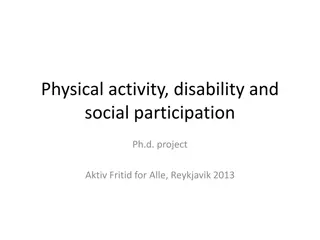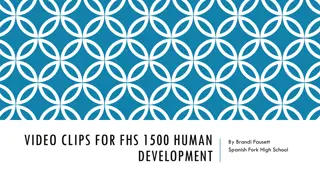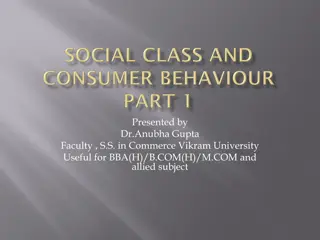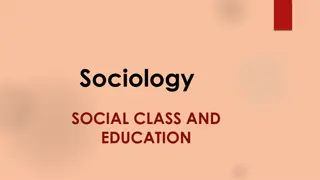Engaging Moon Model Activity in Life Science Class
Christine Bandsma from Kapaa Middle School conducted a Kinesthetic Moon Model Activity involving seventh-grade students to explore the influence of the full moon on ocean movements. The activity was successful, maintaining its layered structure for 24 hours. Students actively participated, connecting the ocean's behavior to lunar phases and showing high engagement levels. The implementation spanned three days, combining hands-on tasks, video resources, group discussions, and assessments to enhance learning outcomes.
Download Presentation

Please find below an Image/Link to download the presentation.
The content on the website is provided AS IS for your information and personal use only. It may not be sold, licensed, or shared on other websites without obtaining consent from the author. Download presentation by click this link. If you encounter any issues during the download, it is possible that the publisher has removed the file from their server.
E N D
Presentation Transcript
Christine Bandsma Kapaa Middle School 7th Grade Life Science There was a full moon last week and the students wanted to know if that had anything to do with making the ocean move.....any faster than the thermohaline 'thingy' we had just tried in class. Kinesthetic Moon Model Activity
Worked great by the way! Way better than I thought it would! It stayed 'layered' until the next day, 24 hours. I could not explain why it didn't 'contaminate'. Help?
Ocean Connection "The wavy line from the full moon on the ocean was amazing!" Student #1 Ocean Literacy Principles: The Earth has one big ocean with many features. "Does that mean it will be a low tide?" Student #2 Connection=Easy because they started it The ocean and humans are inextricably interconnected Personal experience=High level of engagment
Students and Moon Balls Basking in the suns glow. Dark room, blurry, moon ball frenzy.
IMPLEMENTATION Modifications and Rationale *Day 1: Part A and B (plus "making the Moon Balls) was 65 minutes, full class period/long block day *Followed the script exactly, seemed easier that way. *Created some chaos on Day 1 of 3 because we had to use a new and unfamiliar room. *Day 2: youtube video "phases of the moon RMSC Strasenburg Planetarium and Part C was also 65 minutes long *Day 3: Activity questions discussed in small groups and assessment was write up of those answers and reflection on what was learned and what was still confusing.
*Initiation was gone into most because it kept coming back to personal experience and manipulation of the 'moon balls'. *Interpretation was gone into least on my initial thought but as I type this I realize my diagram is not correct. Because I followed the script so closely I didn't realize that doing so was actually taking the class into the interpretation phase constantly. When asking them to model or get to a consensus through discussing differences, they were going into interpretation continually and throughout. *The students were going into initiation because the whole thing was new and exciting to them and relevant to their life experience. I think they were making connections with every move. *I think I guided them through the phases well because of following the script. Even though I didn't realize that I was doing it until after.
TSI Pedagogy Modes of Inquiry addressed CURIOSITY DESCRIPTION AUTHORITATIVE KNOWLEDGE EXPERIMENTATION TECHNOLOGY REPLICATION DEDUCTION TRANSITIVE KNOWLEDGE ==================================================== Learning by doing Incorporation of multiple learning modes Collaboration
Misconceptions 1. The moon doesn't rotate. 1. I had a hard time trying to explain this one. Pretty sure they still think it doesn't. Help? 2. Explaining the size of the sun even though it's farther away had them realize that it has some pull too. 3. Doing the activity cleared this one up quickly. 2. The moon creates the tides. 3. The 'other side of the moon' is always dark. The activity brought up the misconceptions and most were addressed just by doing the activity. Number 1 was hard and I failed a good explanation or activity for it.
Activity Impression The students realized that science is a process when I was unable to help explain that the moon does actually rotate on its axis. It's a process of investigation, interpretation and instruction. I need to go back with something for them to explain this better. The students have a better understanding of the phases of the moon now for sure. This can be evidenced by the 'assessment'/discussion after the activity. They all learned something new or had a misconception clarified. This activity reaffirmed my belief that science must be collaborative and constant revisiting of a concept with new information.
Final Thoughts What went well? Do it again? Suggestions, recommendations, advice This activity was very engaging to my young, short attention span 7th graders. They were moving and making things happen the entire time. I would definetly do this again. The 8th grade science teacher and music teacher came by during the activity and participated as well. The 8th grade teacher wants a copy of the lesson. Make sure that the room is dark enough and set up well enough in advance or else you lose valuable time doing it with the students. Breaking it up into 3 different days helped keep my students more engaged and me more calm. Make sure that you know how to quickly find answers that you can't come up with on your own. I still need help with the moon rotating on its axis......


